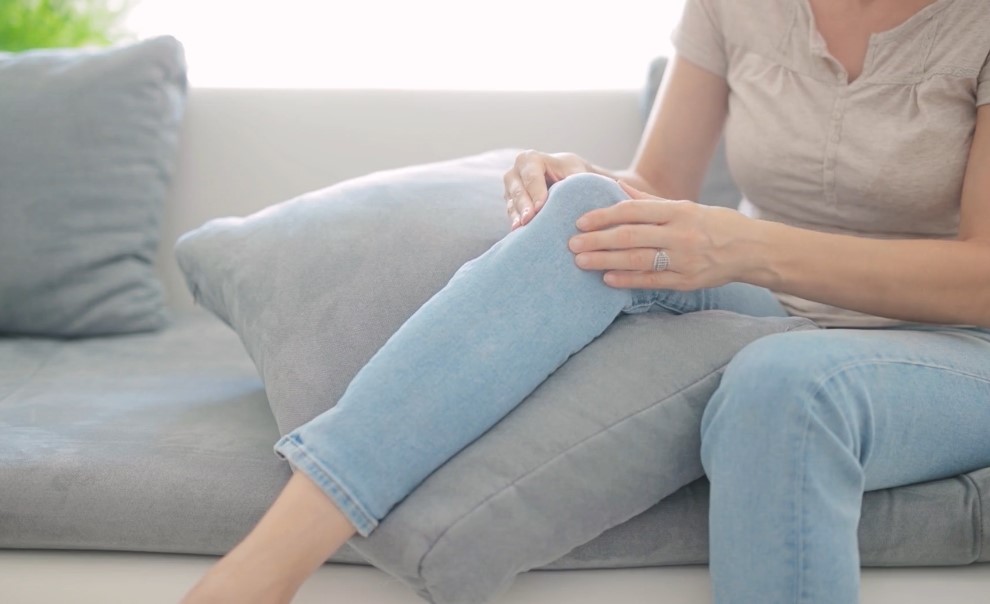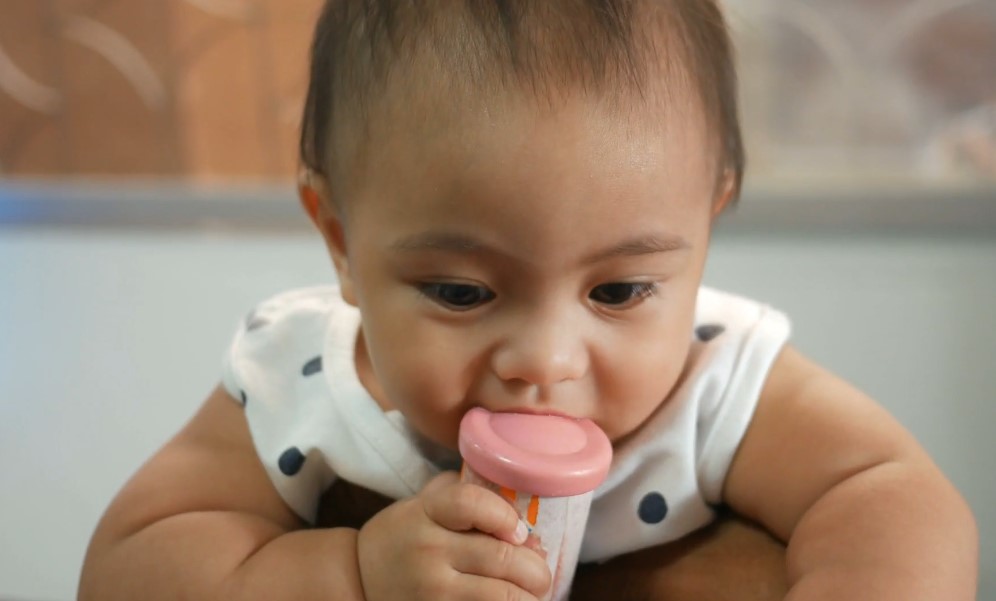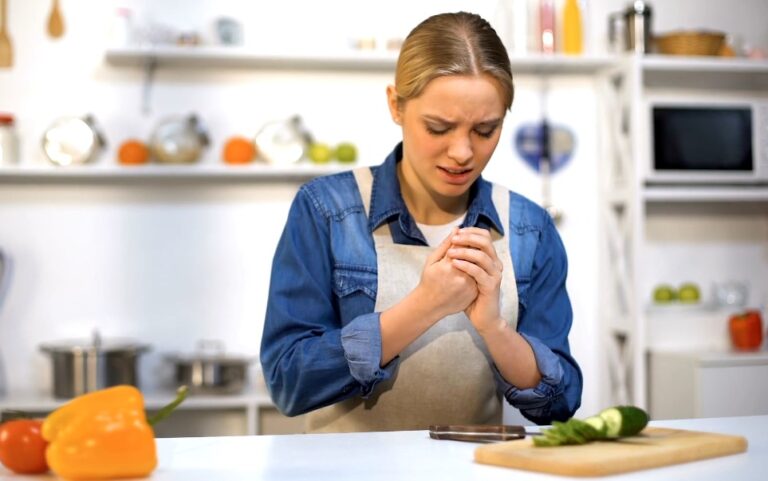Negligence toward hazards in our homes may cause dire consequences. The disturbing reality is that about 2,2000 annual children’s deaths happen because of fatal injuries at home. But adults are also quite vulnerable to home safety hazards. Grown-up Americans regularly end up in the emergency room due to falls. What’s worse, fall-related injuries are often fatal for seniors.
That’s why you must continuously improve and check the safety of your house. Today’s article will introduce you to some widespread and underrated dangers that most of us face. Also, we’ll suggest possible ways of dealing with them by using home safety devices.
Common Home Safety Hazards

Here are the most common home safety hazards grouped into several categories depending on how they happen.
- Falls: Aging takes its toll. Falls often happen among seniors because their balance deteriorates. But even a healthy adult should be careful while working from a step ladder or simply coming down the stairs.
- Cuts: Many consider them a result of careless children’s shenanigans, but even older adults may cut themselves badly. So you should probably watch video tutorials on safely chopping, slicing, and dicing to prevent cuts. Also, never rush when you use a knife.
- Burns: Both chemical and thermal burns are nasty injuries as they heal very slowly. Especially dangerous could be a splash of cleaning supplies in the eyes, e.g., drain or oven cleaners.
- Fire hazards: Open-fire burns and carbon monoxide poisoning cause severe health harm among fire victims. Therefore, installing CO detectors is a must, even if you don’t purchase full-fledged home security systems.
Typical In-Home Children Safety Hazards

Life experiences prove that kids might get hurt in a split second of being out of your sight. Thus, we strongly recommend not leaving children, especially toddlers, alone in a room for too long unless you’re sure there is no risk.
In everyday life, it’s crucial to design a safe environment for young children to prevent:
- Choking: Choking constitutes one of the highest risks for children under five y.o. Besides swallowing non-food items, tots often end up in the hospital emergency room because of food-choking.
- Suffocating: Luckily, it rarely occurs, but infants are vulnerable to suffocating in their cribs. Mostly it happens because of inappropriately soft bedding or being laid over by curtains or bed canopies.
- Drowning: Around 60 kids drowning a bathtub yearly, which is 100% preventable. Previously we’ve given some tips on how you can ensure children’s safety during outdoor swimming and water activities. Check them out, as they can considerably reduce the emergency risk.
- Poisoning: Unintentional poisoning may cause grave consequences if a child doesn’t get urgent treatment. The problem is that almost every household has tons of toxic substances children can access. They can find them in a medicine cabinet, bathroom, or toilet table. Thus, you must hide dangerous liquids, meds, and acidic cleaners away.
- Falling out of windows: It causes about 15,000 fall injuries among little children annually and poses a high risk of severe head injuries. The simplest safety measure you might take is to move chairs and stools away from windows. That will keep the window sashes away from the reach of children.
Risks at the Back and Front Yard
To keep the entire family safe while partying and playing outside, you should also consider:
- Poolside dangers: Be watchful during pool parties and teach your children not to scatter toys around the place as somebody might slip or stumble on them. It’s also crucial to warn kiddos to keep away from the pool drain, which is dangerous due to powerful suction.
- Falling objects: Collapsed tree branches or Halloween roof decorations can badly injure even adults. So keep an eye on those things, remove dangerous branches, and tighten up fasteners of rooftop installations if it has recently been stormy outside.
Home Safety Hazards You Might Overlook

These factors are potentially dangerous as we usually don’t pay attention to them. However, you need to revise your property to timely reveal such blindspots.
Electrical Safety at Home
The poor condition of the electrical system is a frequent cause of home fires. Potential risks are significantly higher if the building is older than 20 years. You need to check with the electrical system if:
- You’ve been living in an old building for a while
- Have a secondary housing where you live off and on
- Have recently installed more powerful appliances, e.g., water heaters, dryers, and convectors.
Ask an electrician to assess the electrical safety at home and revise the entire power system. As additional home safety devices, they may recommend you install proper appliance-grade outlets and surge protectors to withstand peak loads.
Inappropriate Storage of Flammables
Store paint, solvent, and gas cans in a place detached from your house, like a well-ventilated barn or garage. Any sources of ignition, like an open flame or electric tools, must be kept away from flammable substances. To organize safe storage for highly combustible fuels and chemicals, it’s also reasonable to have a separate cabinet.
How to Get Your House Safer?
Check out more tips on how to make your house a safer place and prevent emergencies. They may be helpful when you live alone, have kids, or care for seniors.
When You Live Alone
Previously we’ve given some general advice on how to improve sole household safety. On top of that, you should consider home security systems to have early awareness of fire-related home safety hazards. They support smoke alarms and carbon monoxide detectors that will alert you instantly or notify the monitoring center staff. It’s an excellent solution for timely response to a home fire helping save your property and life.
Here are some more tips for people living alone:
- Unplug rarely used appliances for the sake of electrical safety at home.
- Don’t leave cooking unattended.
- Hire a professional inspector to examine your fireplace and chimney seasonally.
- Declutter time after time to get rid of flammable garbage.
- Replenish your first aid kit.
- Get a fire extinguisher and keep it handy in a kitchen or nearby fireplace.
When You Have Small Kids at Home
@omabelle 🔊SOUND ON🔊 Let’s talk Child safety!!! Today, I’m sharing some Child home safety finds. In as much as I love decorating and making my home Serene, kids always has to be kids and I find my Son always trying to figure things out himself. I thought to Safeguard few places in our home to keep him safe. Thanks to @oshadipetwins for suggesting this video 🤗 Hope you’re inspired 🤗 CLICK LINK IN MY BIO TO – Shop my Reels/Home. You can also checkout my story or my “Shop my home” highlight 🥰 Follow me @omabelle on the Free @shop.LTK App for Recommendations and products you see in my videos. 🥰 🥰 🥰 🥰 🥰 🥰 🥰 🥰 🥰 🥰 🥰 🥰 🥰 🥰 🥰 🥰 🥰 🥰 🥰 🥰 #amazonfinds #amazonmusthaves #homegadgets #homeorganization #homehacks #lifehacks #childsafety #safetyfirst #homedecorideas #homedecoratingideas #homeinteriordesign #organizedhome #kitchenhacks #kitchengadgets #homeorganizer ♬ original sound – Omabelle
Here is how you can secure kids under five y.o. from home safety hazards:
- Choose a safe crib. Make sure that a crib has a slat distance of no more than 2 ⅜ inches so the baby won’t get stuck there. Lay the crib with a firm mattress, and don’t use a pillow if the baby is under one y.o.
- Remove tiny and easy-to-swallow objects like jewelry, marbles, and small bits of construction sets from the floor.
- In addition to hiding dangerous chemicals and meds, secure cabinets and drawers with latches and locks.
- Keep all glass objects and sharp blades out of kids’ reach. Do the same with plastiс bags and wrappings.
- Set home safety devices like window guards and safety gates at the top of staircases to prevent falls.
- Place protective paddings on the sharp edges of furniture.
- Use safety plugs for power outlets and other devices for proper electrical safety at home.
Apart from building safe surroundings for little children, you must stay vigilant and know what they’re up to right now. Keep little ones in sight while being together in the kitchen or pool.

